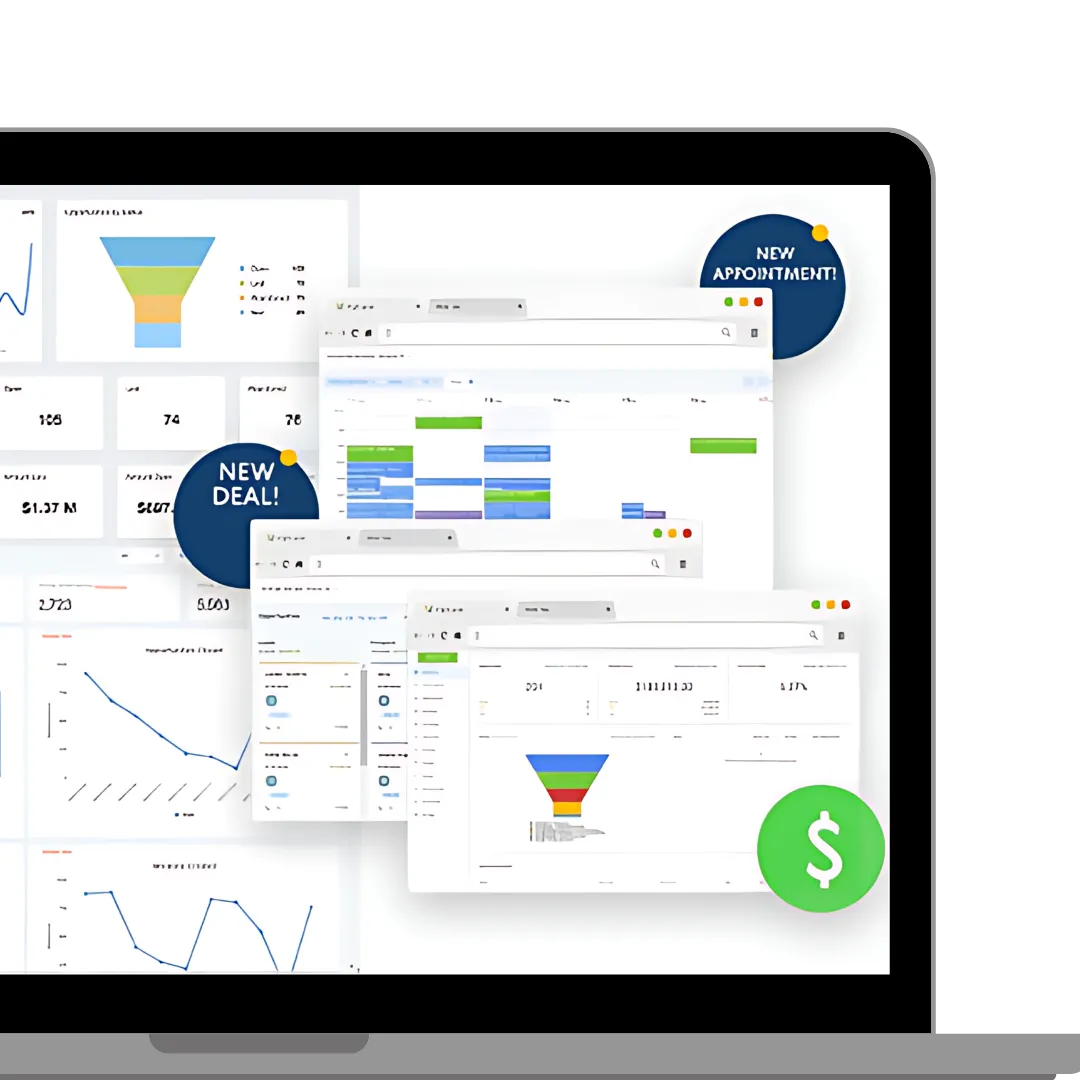
Get More Customer Reviews Through a Marketing Manager
How to Get More Customer Reviews Through a Marketing Manager?
Online reviews are a powerhouse for small and medium businesses. They drive trust, boost SEO, and lift conversions. In fact, more positive reviews lead to higher search rankings and more clicksredefineyourmarketing.comredefineyourmarketing.com. Over 90% of buyers say reviews influence their purchase decisionsredefineyourmarketing.comomnisend.com. Reviews act as social proof – consumers trust them almost as much as personal recommendationsblog.gohighlevel.comomnisend.com. A well-rated business stands out in search results, improves click-through rates, and reassures hesitant customers to buyredefineyourmarketing.comredefineyourmarketing.com. For these reasons, a strategic review generation system is vital for an SMB’s online reputation.
A savvy marketing manager is key to building that system. They set clear goals and processes: defining which review sites to target (Google, Yelp, Facebook, etc.) and coordinating with sales or support teams to ask at the right timeshookedmarketing.net. By integrating the CRM, email/SMS platform, and customer milestones, the marketing manager can automate requests so customers get prompted without manual effort. They also monitor feedback across platforms and ensure the team responds promptly – this engagement further boosts trustredefineyourmarketing.commyreviewconcierge.com. In short, the marketing manager turns positive customer experiences into ongoing marketing by orchestrating review requests, monitoring results, and refining the strategy over time.
Why Online Reviews Matter for SMBs
Better SEO and Visibility: Google’s local ranking takes review quantity and quality into accountredefineyourmarketing.com. A business with more high-star reviews tends to rank higher and show up when people search locally. Recent data confirms 73% of all online reviews happen on Google – so focusing on Google Reviews pays offblog.gohighlevel.com.
Increased Click-Through Rates: Listings with strong ratings and multiple positive reviews grab attention. Shoppers are far more likely to click on a 4+ star business than one with no or bad reviewsredefineyourmarketing.comredefineyourmarketing.com. Even a half-star difference can sway a decision, so each good review helps you stand out in search results.
Trust and Credibility: Reviews are word-of-mouth in a digital world. Customers trust reviews as much as personal recommendationsblog.gohighlevel.com. When you have lots of recent positive feedback, new prospects immediately feel more confident buying from you. Without reviews, even a great product or service may be overlookedredefineyourmarketing.comredefineyourmarketing.com.
Higher Conversions: Positive reviews shorten the sales cycle. A high average rating can push a fence-sitter to become a customerredefineyourmarketing.com. Data shows that businesses with robust review programs see more sales — one report notes that just a few extra star-ratings can significantly increase conversion ratesredefineyourmarketing.com.
Customer Engagement: Responding to reviews (good and bad) signals you care. Google even rewards active businesses that engage with reviewers by giving them a boostredefineyourmarketing.commyreviewconcierge.com. And consumers notice – 56% say seeing a business respond to reviews improves their impression of the brandpodium.com.
In short, reviews aren’t optional extras: they are critical assets for SEO, customer trust, and sales. A marketing manager who builds a review collection system puts their business ahead of the competition.
The Marketing Manager’s Review Strategy
A marketing manager’s role is to create and execute a review generation strategy. This includes:
Defining Goals: Decide what you want. Is the goal to improve your Google Business Profile rating? To grow Yelp reviews? To get at least 10 new reviews per month? Setting clear objectives (e.g. “Increase 5-star Google reviews by 20% in 6 months”) is the first stephookedmarketing.net.
Mapping the Customer Journey: Identify touchpoints where you can ask for feedback. Common triggers include after a sale, after a service call, or at milestone events (e.g. 1-year service anniversary). Each trigger becomes a cue for a review request.
Using the Right Channels: Determine how to reach customers. Younger customers may respond better to SMS; others might prefer email or social media. The marketing manager should segment their list (e.g. VIP customers, support ticket closers) and tailor the channel and message accordingly.
Coordinating with Teams: The marketing manager works with sales, support, and operations so everyone knows when and how to ask. For example, train support reps to say, “We’d love a review if you’re satisfied.” or have salespeople ask after a purchase.
Leveraging CRM and Automation: By tying review requests into the CRM, a marketing manager ensures no customer is forgotten. Automated workflows can send an email or text a certain number of days after purchase or ticket closure, without manual interventionblog.gohighlevel.com.
Monitoring & Responding: A manager also oversees review monitoring. They should keep tabs on all review sites, track metrics (see below), and ensure the team replies promptly to each review. As one guide notes, proactively responding to feedback (especially resolving negatives) directly builds trustmyreviewconcierge.comreviewtrackers.com.
Overall, a marketing manager treats reviews as a marketing campaign: set goals, implement tools, measure results, and optimize.
Review Automation Tools for SMBs
To scale review generation, modern customer feedback tools are essential. These platforms automate sending requests and gathering reviews across multiple sites. Key players include:
LeadMagno (with CRM): LeadMagno’s all-in-one CRM and marketing automation can send review requests via email/SMS as part of its workflows. Its Pro plan (from $197/mo) even includes reputation management features, surveys, and automated review workflowsleadmagno.com. In short, if you use LeadMagno, you can automate review requests without a separate tool: the CRM stores customer contacts, triggers follow-ups, and tracks responses centrally.
GoHighLevel (HighLevel): This all-in-one marketing platform also offers reputation management. HighLevel can be configured to automatically text or email customers requesting reviews after appointments or sales. It integrates your Google Business Profile and Facebook Page so you can manage reviews from a single dashboardblog.gohighlevel.com. HighLevel’s reps note that 70% of consumers would leave a review if askedblog.gohighlevel.com, so its automation (workflows + surveys) helps “ensure a steady stream of feedback”blog.gohighlevel.com.
BirdEye: A popular SMB review software, Birdeye specializes in automated review requests and monitoring. It connects to hundreds of platforms (Google, Yelp, Facebook, industry sites) and can send SMS/email campaigns to customers. Birdeye also lets you create custom surveys and has a unified inbox to manage replies. (BirdEye pricing is higher—often enterprise level.)
NiceJob: Focused on local businesses and franchises, NiceJob automates review generation in just a few clicks. It can launch SMS and email sequences for reviews, send reminders, and even auto-share 5-star reviews to social media (Facebook, Instagram) for added visibilityget.nicejob.comget.nicejob.com. Users report getting “4x more reviews” with its smart campaignsget.nicejob.com.
A comparison of these tools is below. Notice that LeadMagno’s platform includes native review automation within its CRM (no extra software needed)leadmagno.com, whereas others may require separate accounts or paid plans for reputation modules.

When and How to Ask for Reviews
Timing and context matter. Here are proven triggers and tactics to request feedback:
After Purchase or Delivery: Soon after a sale or product delivery, customers are most excited. Sending a review request 1–3 days post-purchase catches them while the experience is freshtextmagic.com. For example: “Hi [Name], thanks for choosing [Business]! Your feedback helps us grow. We’d really appreciate it if you could leave us a quick review here: [Review Link].”textmagic.com. (A study found that up to 80% of online reviews come from follow-up messages sent right after a purchasetextmagic.com.)
After Service or Support: As soon as a service call, installation, or customer support ticket concludes, prompt for a review. A message like “We hope you loved your [Service] today! Your thoughts help us improve – mind sharing a quick review? [Link]. Thanks!” has high impacttextmagic.com. It ties the ask to their recent interaction and shows you value their input.
Milestone Triggers: For ongoing relationships, use milestones. For example, after 30 days of usage (to ensure satisfaction), or on the 1-year service anniversary, send a gentle request. You can also ask longtime customers to update or add a review: “Hi [Name], you’ve been with us for 2 years – would you mind sharing how the experience has been at [Link]?”textmagic.com.
Follow-Ups: Don’t stop at one ask. A second reminder can boost response. A simple nudge works: “Hey [Name], just a quick reminder – we’d love your feedback if you haven’t had a chance yet. Leave a review here: [Link]. Thanks!”textmagic.com. Timing-wise, a few days after the first request is ideal.
Social or SMS Posts: If you have a very positive interaction (e.g. a customer praises you on social), privately ask them to formalize it as a review. Or share direct review links via social media or text after a positive mention.
Examples of review request messages:
“Hi [Name], thank you for your recent [purchase/service]! Could you take a minute to tell us how we did? Leave a review here: [Link].”textmagic.com “We hope our team helped you today! Your feedback means the world to us—mind leaving a quick review? [Link].”textmagic.com “Loved your experience at [Business]? Please share the love! Leave a review at [Link] and refer a friend for a bonus. Thanks!”textmagic.com
These templates keep it personal, positive, and easy (often just one or two lines plus a link). Adjust tone for your brand and channel (SMS can be more casual, email slightly more formal). The key is to make it clear why their review matters (to you and to future customers) and to provide a direct link or CTA button.
Key Metrics to Track
A marketing manager should monitor review performance with hard metrics. Important KPIs include:
Review Volume: Total number of reviews received (per week/month). Track trends over time. A rising review count means your outreach is working, while a sudden drop may signal a missed opportunitymyreviewconcierge.com. Compare to competitors: if they average 10 reviews/month and you’re at 2, ramp up your efforts.
Average Rating (Score): Your star rating (e.g. 4.5/5) and its distribution. A high average (above ~4.0) is the baseline for trustmyreviewconcierge.com. Watch for dips: a new cluster of 2- or 3-star reviews can pull your average down. Keep an eye on platforms that show your stars (Google, Yelp, Facebook) as those immediately influence clicksmyreviewconcierge.com.
Sentiment Analysis: Beyond numbers, examine review content. Many reputation tools do this automatically. Look at positive vs. negative sentiment and common themes. For example, if “customer service” appears often with a negative sentiment, you know where to improvemyreviewconcierge.com. Highlight recurring praise, too (e.g. “quick delivery,” “helpful support”) to promote in marketing.
Site Distribution: See where your reviews come from. Are they mostly on Google? Yelp? Industry-specific sites? Ensure you’re not putting all eggs in one basket. If one platform lags, perhaps incentivize reviews there (or make it easy to leave reviews across the popular sites).
Response Rate and Time: Track how quickly and often you reply to reviews. A high response rate (replying to nearly 100%) shows engagement. Industry best practice is to respond to negative reviews within 24–48 hoursmyreviewconcierge.com. Quick, polite replies improve your reputation and can sometimes turn negative situations around.
By regularly reviewing these metrics, a manager can tweak the strategy. For instance, if positive sentiment is high but review volume is low, more frequent requests are needed. If negative sentiment spikes, dig into those reviews and address the issues.
Handling Negative Reviews
Negative feedback is inevitable. Instead of fearing it, have a plan:
Don’t Avoid Asking: Surprisingly, many customers hesitate to leave positive feedback, but will voice complaints. Studies show a single negative review can cost 22% of business, and 60% of consumers may avoid a brand with negative commentsblog.gohighlevel.com. However, if you keep a stream of positive reviews, one or two bad ones have less impact. It’s often said it takes ~40 good reviews to balance one negative. So press forward with review requests even if you worry about negative ones.
Respond Quickly and Professionally: If a negative review appears, respond promptly (within a day or two). Publicly thank the reviewer for their feedback and apologize for the issue, even if it wasn’t your faultreviewtrackers.com. Show empathy and commitment: e.g. “We’re sorry your experience didn’t meet our usual standards. We appreciate you bringing this to our attention.” Then invite them to resolve the issue offline (“Please contact us at [phone/email] so we can make it right”).
Stay Calm and Positive: Never get defensive or ignore criticism. Responding shows future customers that you care and take responsibility. In fact, 45% of consumers say they are more likely to visit a business that responds to negative reviewsreviewtrackers.com. By contrast, leaving bad reviews unanswered looks bad.
Learn and Improve: Use negative reviews as feedback. If multiple customers mention the same issue (e.g. late shipping), address that root cause. Then highlight the fix (“We listened and improved X!”) in your next review outreach or update.
Encourage More Positive Feedback: The best defense is a stronger offense. Keep requesting reviews from satisfied customers to drown out the negatives. Over time, the majority of reviews should ideally be 4-5 stars, making the occasional 3-star or 2-star less damaging.
Overall, acknowledge the fear of negative reviews, but follow best practices: thank, apologize, and offer a solutionreviewtrackers.commyreviewconcierge.com. This approach can actually turn unhappy customers into advocates.

LeadMagno’s automation advantage: With LeadMagno, review requests are part of your normal follow-up process. Its Pro plan explicitly includes “Reputation Management” and automated workflowsleadmagno.com, so you don’t need a separate review software. All customer data lives in one system, making it easy to trigger an ask at any workflow milestone.
Start Generating More Reviews Today!
Ready to boost your online reputation? Our marketing and CRM experts can help you set up a review-generation engine tailored to your business. Book a free strategy call or start your LeadMagno free trial today to see how automation can fill your pipeline with positive reviews.
Bonus: For a quick-start guide, download our free “Customer Review Generation Checklist” (PDF) to cover every step—from timing your requests to crafting messages. It's a handy companion to this post and will keep your review strategy on track.
Book Your Free Consultation | Start a 30-Day Free Trial of LeadMagno
Sources: Insights and data from industry research and marketing expertsredefineyourmarketing.comredefineyourmarketing.comtextmagic.commyreviewconcierge.comreviewtrackers.comblog.gohighlevel.com.









Facebook
Instagram
X
LinkedIn
Youtube
TikTok